The Evolution of Cell Phone Tech in My Life
Technology has been able to take us to places that we would never have been able to imagine. I remember back in the day when I had a pager, better known as a beeper. And that was only as recent as around 1993-ish. In order to page someone you simply had to dial the beeper's number and input a phone number for the person to call you back.
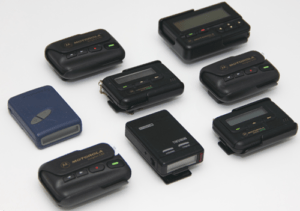
Pager
As the beeping world progressed people would assign special numbers to people in order to know who was beeping you. Then, of course, you would also get a code for how urgent the call was. An example would be something like this: 331-8898 15 611. The first number would be the callback number and 15 would be an unofficial number assigned to someone. The 611 would indicate that it's not super urgent, but a little more urgent than normal. The urgency code was based on 911 being the most urgent and 111 being the least. This system lasted a few years.
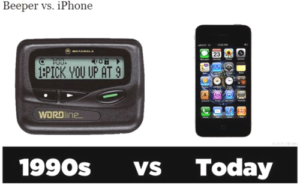
Bag cell phone
Then came the bag cell phone. Only the rich people had a bag cell phone. It was difficult to look very cool toting around a huge black bag that looked like you were carrying around the nuclear blast codes. I think maybe one friend's dad had one of these big ol' phones. Whether you looked cool or not was immaterial, because you were most likely one of the few people to roll around with one.
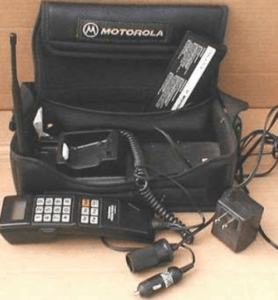
Car phones
Also in this timeframe, some people had car phones. This phone was attached to the car's stereo deck and I think it drew its power from the car stereo as well. This phone's design was pretty cool because it was mounted down on your right in the center console, or in front of you near the radio. The keypad was on what would be the top, or what may be considered the back of the phone, so it was easy to dial with your thumb. I literally only knew one of my friend's parents that had one of these in their cars. He was a state assemblyman at the time. These phones were few and far between, at least in my life. It was also pretty expensive to make calls from.
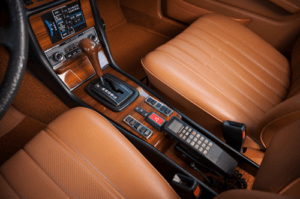
Brick phone
Moving along the timeline of technological advancements the next phone I remember, was the big brick phone. Literally, the only person I knew that had this phone was Zack Morris from "Saved By The Bell". This was a huge bagless phone that literally looked very similar to having a brick in your hand. Hence, the common name for it was the brick phone. Motorola was the largest brand name I remember that made the brick phones.
Clamshell phone
A bit later along the tech timeline, the Motorola StarTAC series came along. It was at this time that I came along on the scene. Up until this point, I was still rocking the pager/beeper, but I was in my late teens or early 20s by this time and it was due time to have a cell phone in hand.
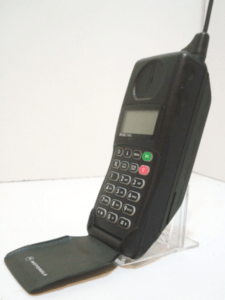
The StarTAC was the first clamshell phone and completely analog and was released in 1996. The battery was removable from the back so it was easy to switch batteries if needed. It was very common to have two batteries with you almost all the time. Just think about it, this phone was completely analog and all you could do was talk with your cell phone. That's it. You could talk on it. There was no internet surfing yet at this point on your phone. It was a dark time in comparison to today's abilities of phones.
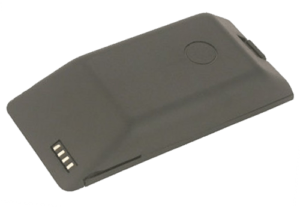
Flip-phone
It would not be until 2010 that the modern day smartphone that we recognize today would be released by Apple. However, before the time of the iPhonethere was actually a "smartphone" made by Ericsson it was the Symbian phone. It was a touchscreen Ericsson R380 Smartphone, it was released in 2000 and was the first device marketed as a "smartphone". It combined a PDA with a mobile phone. Apple made the first large market smartphone when they launched the first generation of the iPhone. However, people were using the term "smartphone" since 1995, but the first true smartphone actually made its debut three years earlier in 1992. It was called the Simon Personal Communicator, and it was created by IBM more than 15 years before Apple released the iPhone.
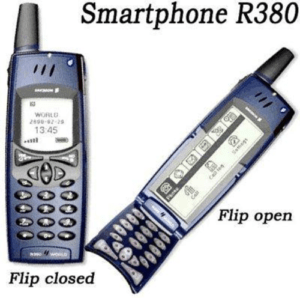
Smartphone
Most people today are familiar with what we know as a modern day smartphone. The Apple and the Android devices are so much more than we could have ever imagined back in the 90s. Today we are able to have almost any piece of knowledge that you could ever desire at the tip of our fingers. Being able to navigate the web within seconds is an amazing feature that a lot of people never knew didn't exist.
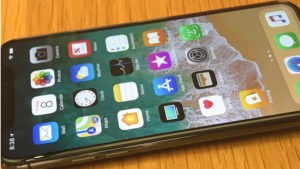
Though today we have incredible devices by yester-decade's standards, man, don't these phones come with a hefty price tag? Sometimes the mere price itself is enough to turn you away. Luckily, we live in a time of eBay and Amazon where you can sell your older devices electronic devices (or pretty much anything else). If selling your electronic devices online isn't your thing, or you don't know how it's nice to know that there are reputable companies that buy back your used or broken devices. Check out www.SellBroke.com / www.SellLaptopBack.com. These companies really make selling laptops and other devices easy and profitable.
These new Smartphone technologies will blow your mind!
Think there’s nothing new in the world of smartphones? Think again! Smartphones are getting smarter every year. Since the advent of the iPhone, they’ve gained all kinds of crazy features that can help keep you productive, informed, and entertained. If you haven’t been keeping up, this guide will bring you up to speed.
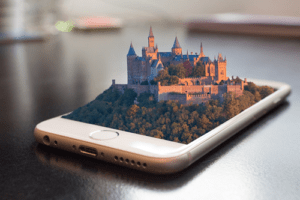 Image by FunkyFocus on Pixabay
Image by FunkyFocus on Pixabay1. Folding Screens
One of the craziest things to come out of the recent Consumer Electronics Show (CES) are folding screens. You might be asking “what in the world is a folding screen? Like is it paper?” Well yeah – it pretty much is. You can physically fold your phone in half, giving you a device in two different sizes. Now you may be asking yourself: “okay neat, but why would I want this?” The answer is that this gives you a tablet-sized phone – in your pocket. You may pull our your smart phone for quick browsing on the subway or while waiting for the bus, but when you sit down now you can pull out a full tablet. You’ve basically doubled your screen real estate! This is a game changer. No more tiny screens – just super gigantic ones like out of a sci-fi movie!
2. 3D Holographic Displays
Star Wars holographic chess anyone? Much like folding screens (see above), this doesn’t even seem possible at first glance. “Are these displays really projecting 3D? Like with depth?” The answer is a strong yes. It is early, but there is promising technology being rolled out. RED, famous for their production 4k cameras costing major $$$, has partnered up to create a new smartphone with cutting edge 3d holographic displays. These new 3D screens pop right out, giving you the sense of perspective missing from your run-of-themill 2D screens. The phone is $1300 for now, but with Moore’s Law on our side we can expect it to trickle down into more affordable models. Imagine board games played right on top of displays, the pieces jutting out. It’s right around the corner!
3. Augmented Reality (AR)
If you’ve been on Tinder lately, you’ve probably noticed everybody’s love of Snapchat filters. They’re fun, creative, and make you look better – who could resist? Yet with augmented reality, there’s a lot more happening than you might think. For instance, what if you’re in a country and all the signs read in another language? You might be okay if its one you know or one that sounds similar, but what if its Japanese? Unless you know the alphabet, you’ll probably struggle. Enter the new Google translate app: simply move your phone’s camera over the sign and watch it translate in real time. It’s like magic. That’s not the only cutting edge AR app either. A lot of them let you see what will happen before you make a commitment too. Even companies like Ikea are getting in on this. Their new Ikea Place app will let you envision how their furniture will fit in with your living room. You can literally see before you buy. What else is there? What about tattoos? They are cool, but pick the wrong one and you’re stuck with it for life. Well Inkhunter will let you see how the tattoo fits on your skin before you commit to one. You can move it over your skin and see how the tattoo looks, giving you an instant, real-time visual. AR has so many uses and with phones getting more powerful every year, we can expect that the apps using them will only go up!
You ready for the smartphone of the future?
Between AR, 3D holographic displays, and folding screens, smart phones have never been more exiciting! With these new smartphone technologies coming out, we’ll soon wake up and wonder how we ever lived without them. And if it's time to sell your iPhone we're here to help. Apple still dominates US market but this could change any time now.
Unfolding the Future of Smartphones
As of 2018, mankind officially lives in a world where digital screens are foldable. It’s an amazing accomplishment considering that, only 15 years ago, smart phones didn’t exist. The possible applications of foldable touchscreens are near endless.
It’s too bad we first have to deal with rather horrible first attempts.
The United States reveled and rejoiced at this new technological feat when Samsung announced their foldable phone, the Galaxy Fold. That joy was fairly short-lived, however. As soon as the two thousand dollar phones made it into the hands of tech reviewers before the official public release, they almost instantly started breaking.
 Image from Pixabay
Image from PixabayWhat would you expect, though, from the same company that brought us the beloved Galaxy Note 7, whose best feature was spontaneous, fiery explosion? But hey, at least it still had a headphone jack. Take that, Apple.
After the tech reviewers informed Samsung of the many issues and breaks with the display and hinge, the world’s largest handset maker indefinitely postponed the Galaxy Fold’s original release date of 26 April and told existing pre-order customers that the company would cancel their purchases automatically unless the buyer tells them to keep it active.
Samsung isn’t the only company trying to transform the smartphone market with this new technology, though. There are a number of Chinese companies who have either already released folding phones or are going to in the coming months.
Royale FlexPai
Despite being the first to sell a foldable smartphone in the United States, the title of World’s First actually goes to a startup company in China, called Royale, who came out with their Royale FlexPai in late 2018.
You might not have heard of this phone because—despite the fact that they’re far more robust than Samsung’s “shatter-if-you-look-at-them-wrong” Galaxy Fold—the FlexPai functions rather poorly, software-wise. The $1,320 phone’s Operating System can’t quite keep up with auto-rotation of the phone, let alone folding.
So, while Royale may have gotten the hardware durability part down (so far), they still have a way to go before producing a practical, useable, folding phone.
Huawei Mate X
The news does get better, though. The Huawei Mate X, set to release later this year, seems extremely promising—as long as you don’t live in the US and are willing to pay about $2,600 dollars.
Featuring a screen that sits on the outside of the phone (unlike the Galaxy Fold whose folding screen is on the inside), it’s more than just a pretty, bright face. Behind that 8-inch folding screen is serious computing power, 5G capability, and a custom version of Android that snappily adjusts to every fold of the screen. With no awkward lagging or confusion like in the FlexPai and no indications of critical hardware failure like in the Galaxy Fold, the Mate X might well be the first truly successful folding smartphone.
If that’s the case, this will be another nail in the coffin for the US lead in technology as they fall behind China not only in folding phones, but in 5G, too.
Unfolding The Future
Despite Huawei, Samsung, and Royale boldly attempting to lead the pack, there are plenty of more cautious phone-makers who are no doubt taking detailed notes on these frontrunners. Google has publicly announced that they are working on a folding phone. Apple has a few patents with some ideas for folding phones, and ZTE (another Chinese company) filed a patent in March for what looks like a brilliantly unconventional, vertically folding smartphone—like the Motorola RAZR and other clamshell-style phones of days long past.
Despite the lackluster implementation of the technology thus far, the idea of folding screens sounds like a huge step towards living in a real-life sci-fi tech utopia. Are folding phones going to be an awesome aspect of everyday life in the future? Or will they be just another short-lived fad like Google Glass, 3D TVs, and Crystal Pepsi? For now you can learn how to speed up your older phone so you don't have to break your bank to buy the newest one. Some of the older devices seem to last longer than the new modern ones. It's a shame that eventually they become obsolete because they don't support the latest OS and can't be really used anymore. And if you can't use your old phone anymore you can easily sell it and shop for one that you can afford.